Text and screenshots by Jenny Odell.
Early in my first semester of grad school at the San Francisco Art Institute, I found myself hunched over a wooden desk in a studio that was still mostly empty, obsessively clicking through the city’s streets on Google StreetView. Not that I ever thought much about why I was doing it, but in retrospect it was an attempt to acclimate. I’d just moved to San Francisco from Berkeley and had grown up in a South Bay suburb. Wading through flocks of pigeons, enduring the stuffy #30 bus full of pink plastic bags as it sludged down Stockton, blankly acknowledging the drug dealers outside my door – this was an experience of the city, but StreetView allowed me to study it from a remove. Here the city was mute and still, amenable to long periods of scrutiny.
Meanwhile, I was almost daily taking the #48 bus to the grad studios, a bus which would lurch impossibly up Potrero Hill before turning sharply down and passing a series of pastel-colored barracks with what that looked like serial numbers. Eventually I figured out that these were housing projects, something I had never actually seen and knew only abstractly through mentions in urban studies. Peering out from the bus at these long pink and turquoise buildings, I felt that any visible, sustained curiosity would seem rude or idiotic, so I returned there on StreetView instead. That Google Maps technology would allow me to “go” somewhere digitally (as though with an invisibility cloak) that I felt unsafe going to in real life is a strange thing. Instead of using StreetView to help navigate to a place I would actually be going, I was using it to visit the furthest thing from my experience or reality.
I became especially and uncomfortably fixated on the Sunnydale projects, which lay at the very south end of another MUNI line I also sometimes took to get to school. I never actually saw it in real life. Around that time I’d run across an article about Sunnydale in The Chronicle literally titled “Life at the Bottom,” which said among other things that it was especially blighted and dangerous because it was geographically isolated. MUNI drivers whose routes went through Sunnydale allegedly refused to stop there after dark and cable guys only made morning appointments. One shop owner there was quoted comparing it to a concentration camp. “There is no way out unless you die,” he said. To me at the time, having grown up in San Jose admidst benign stucco shopping centers, this was the stuff of myth, of movies. It had no precedent in my experience.
I probably would have never seen it, either, if it hadn’t been for Google StreetView. To be certain, I would have never “moved” through the streets or “looked” at anything. I would have never had any experience, however approximate, of that place: row after row of barracks with unkempt grass in between, bars on windows, falling-over recycling bins, the occasional cop car. All this clicking and zooming in. But rather than satisfy any curiosity, these blurry, arbitrary images — taken dispassionately by a camera atop a Google StreetView car, one after another — only inflamed that curiosity. There was something uncanny to me about the projects, or rather about StreetView’s images of the projects, about myself hunched over at the wooden desk studying these images at length. These were authorless, indiscriminate, low-grade images taken of what appeared to be a banal scene. There was almost no one in the streets.
Despite this, I was clearly looking for something, an attempt more akin to reading a text than to navigating a map. To even be able to find these buildings here – yes, they really were here, plainly existing, arbitrarily documented, containing people in a space physically contiguous with where I was sitting that very moment – affirmed the absolute reality of a place where on a typical day, “…teens ditch school to take the bus to a funeral. A woman wanders into the liquor store to buy Cheetos for her young grandson and a 20-ounce beer for herself. Two 3-year-old boys ride their tricycles down a steep hill patched with trash and broken glass.”
Herein was the intermeshing of representation and reality that would later become the basis for most of my work with Google Maps: the running up of humanness (narrative, warmth, drama, violence, meaning, time) against, or its rupture into, the automated and timeless gaze of a StreetView camera. Ostensibly this imagery was made for the purposes of navigation, an extension of a regular map, though I’d argue that Google StreetView’s eventual purpose would be an end-in-itself conquest of every available mile of road anywhere. The point here is that what was meant as information for one purpose had become, for me, information of an entirely different nature. Where did emotion fit into the equation of how StreetView was supposed to be used? It became impossible to deny the feelings I was having about what I was looking at, even if the camera itself had seen nothing. The intrusion of humanity was two-way: it leaked from the surface of the low-resolution images at the same time that a confused mix of trepidation and empathy came out of me.
On one of my many “walks” through Sunnydale, I had a sudden encounter with a man. I had navigated to the left when this figure abruptly came into view walking toward the camera with his hands in his pockets and wearing a black sweatshirt with a life-size skeleton on it. This encounter literally startled me. Like every other person on StreetView, his face had been blurred out – it was only the suggestion, an inference of a face. At that time, in 2008, Google StreetView imagery on the whole was not very sharp, but it was blurrier in places that for whatever reason were not important enough to whomever to update with sharper imagery, resulting in something like pixel ghettos. Thus zooming in on this man had relatively little effect except to blow up the blurry image on my screen. Actually, the real effect it had was that of acknowledging my own curiosity. It was like a futile leaning-in, a scrutiny of blankness where I imagined, wanted there to be a face. In the utilitarian terms of Google Maps, this man was excess information (it’s not called Google PeopleView). Nonetheless, a human was incidentally caught on the camera while a human (me) on the other side could not help but attempt to read human meaning in the image.
Clicking forward and facing backward, one could watch this man cross the street and disappear into one of the buildings. I returned many times; he was always in the same place, forever crossing the same street into the same building. And always I had the same insatiable curiosity about who this person was and why he was crossing the street and where he had come from and where he was going, and so on.
I took a screen shot and paid a hefty amount to have this image printed life-size at the school’s digital imaging center. The technician there seemed puzzled. “You know this is going to be quite… blurry,” he said. Why did I want to blow up something I already couldn’t see? I was trying to render an encounter that on the one hand was real but was also completely not real. Strictly speaking, all I had done was take my own photograph of a photograph of a man, and yet that encounter was undeniably realer than looking at even a detailed portrait of someone. I’d “found” him, I’d “run into” him on my way down a street through Sunnydale. The encounter had happened in time, in the course of my day, and in the frozen, repeated course of his day. Furthermore, the initial photo was basically as candid as it gets: no one had sought this man out for a photo—he’d simply happened to be there at that particular time, like a blip, amongst the thousands of automated, stitched-together images that comprise StreetView. Ours was a chance meeting.
I don’t mean to suggest that this encounter sufficed for a real one. Nor do I mean to disacknowledge the social reality that I was a middle class graduate student looking at images on a computer of a particularly poor, underserved community. This is a reality I was uncomfortably aware of all the while. And my perception of what I was looking at was certainly influenced by what I expected to find there, whether or not I wanted to have those expectations, and whether they were based on any amount of truth.
But the amount of strange realness the encounter did have was a result of the nature of the imagery itself. The blankness of his face, of every face on Google StreetView, was in some ways more reflective of human subjectivity and undefinability than a high-resolution portrait by a photographer could have ever been. A photograph, especially a portrait, is usually made to tell a story, to bring the inside out – it says something. But this image said nothing. Instead, the blurriness became a void into which my imagination disappeared, failing to delineate anything.
This is what was real about it: behind the screen of the face, behind the screen of how we perceive someone, lies an unknowable field of subjectivity. This idea can be terrifying. And yet it is also an extremely real and human desire to reach that field, an innate curiosity. As my advisor Laeticia Sonami would later point out, the blurry skeleton on the man’s sweatshirt was especially poignant given this context. In it, one could perhaps palpate the impossible fantasy of being able to see all the way into someone, past all of the portrayals, assumptions, misunderstandings, abstractions, and distortions, straight to the depths of a humanness that strains representation. This is the fantasy of being able to fathom the infinity of another person’s reality. The screen shot’s technical shortcomings as a portrait (blurriness, obliqueness, lack of context) were exactly what prevented it from being closed off as an abstraction. Instead, they precipitated a steady desire to locate human meaning in the image, in this accidental but invaluable informational excess.
In subsequent years the man disappeared from StreetView; the imagery there was updated. In fact it is entirely possible that, outside of whatever archives Google keeps of its StreetView images, I am the only person with this image of him. The encounter would eventually inspire my year-and-a-half-long project, Travel by Approximation: A Virtual Road Trip. I still have the life-size print, now a memory of a memory of an encounter.
Visit Jenny Odell website for more works.

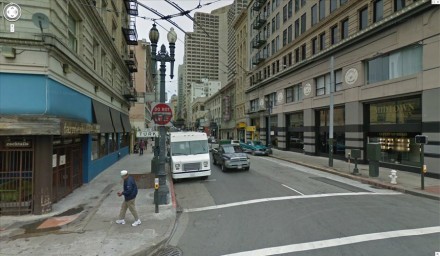
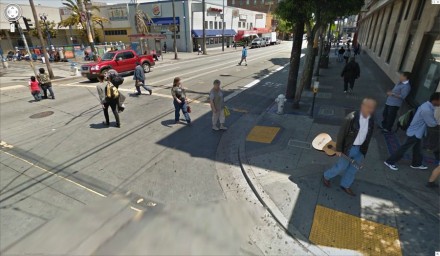
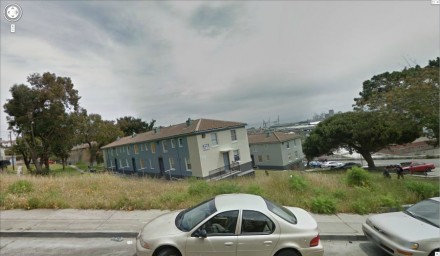
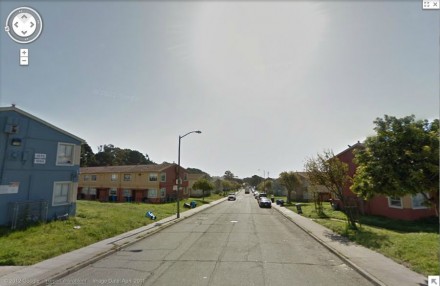
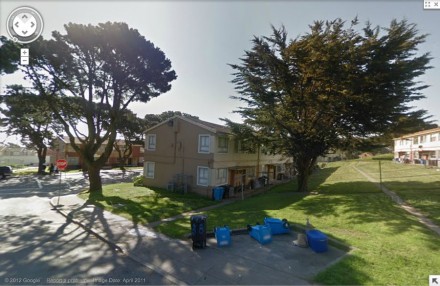
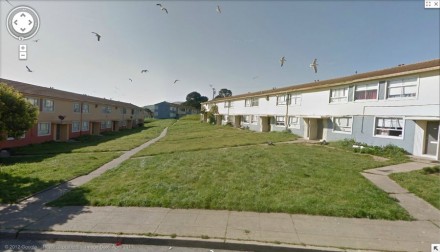
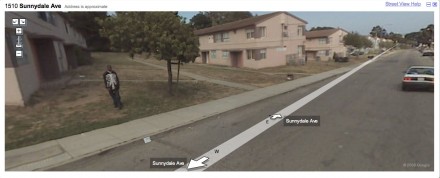
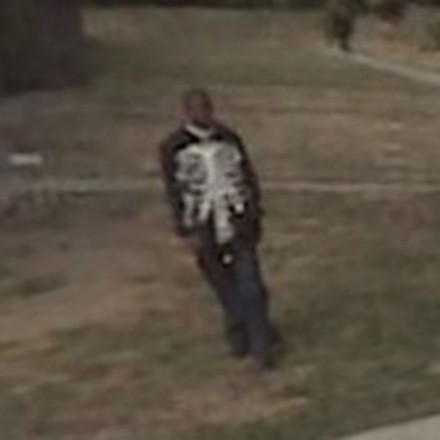

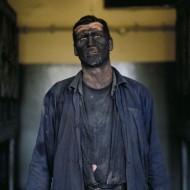
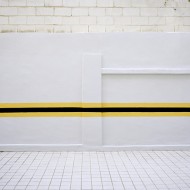
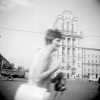





























always great to see new and creative ideas and work, loved the article and had great time looking through your work/webpage.
Happy you liked the article Gonzalo!
I especially like Jenny Odell Satellite Collection and Signs of Life, but the last picture in Re-enactments really made me smile. Great image with a lot of humor. Check it out!
Very interesting work.
You can also subscribe to this post comments RSS feed.